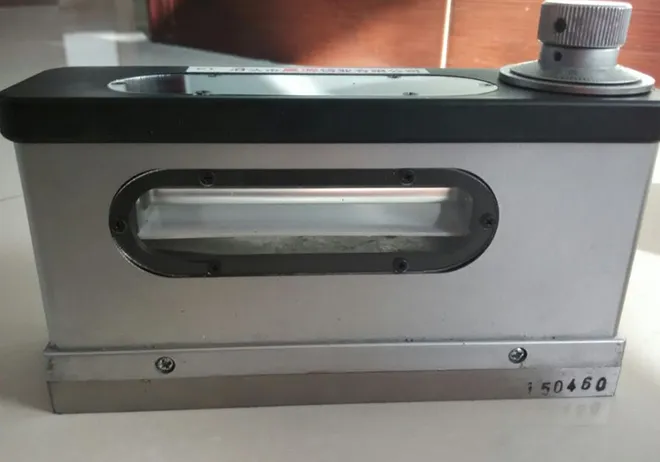नोव्हेंबर . 08, 2024 07:55 Back to list
25mm Butterfly Valve Specifications and Applications for Optimal Flow Control
Understanding the 25mm Butterfly Valve A Comprehensive Guide
Within the realm of fluid control systems, valves play a crucial role in managing the flow and pressure of liquids and gases. Among these, the butterfly valve has gained popularity due to its simplicity, efficiency, and versatility. This article delves into the specifics of the 25mm butterfly valve, including its design, applications, advantages, and considerations for use.
What is a Butterfly Valve?
A butterfly valve consists of a circular disc or plate that rotates around a central axis to regulate the flow of fluid. Its name derives from the way the disc resembles a butterfly’s wings when opened and closed. The key characteristic of a butterfly valve is that it acts as a throttling mechanism and can also function as an on/off control valve.
The 25mm Butterfly Valve
The 25mm butterfly valve refers to a valve with a nominal size of 25 millimeters, which is approximately one inch in diameter. This size classification is crucial as it directly impacts the valve's flow capacity, making it suitable for various applications in different industries.
Design Features
The design of a 25mm butterfly valve typically consists of several essential components
1. Body Made from durable materials such as stainless steel, PVC, or cast iron, the body houses the internal components and determines the valve's compatibility with various fluids. 2. Disc The disc is the part that rotates to open or close the valve. Its shape and material can impact the flow characteristics and the valve's overall efficiency.
3. Stem This connects the disc to the actuator. The stem's design must ensure optimal performance during operation.
4. Seat The seal around the disc that prevents leakage when the valve is closed. The material of the seat will depend on the fluid it is designed to handle.
5. Actuator Depending on the application, the actuator can be manual or automated, enabling precise control over the valve operation.
Applications
The 25mm butterfly valve finds applications across a multitude of industries, including
- Water Treatment Used to regulate water flow in treatment plants and distribution systems.
- HVAC Systems Essential for controlling airflow and temperature within residential and commercial buildings.
- Food and Beverage Employed in processing plants to handle liquid products, ensuring hygiene and efficiency.
25mm butterfly valve

- Chemical Processing Suitable for managing corrosive or abrasive fluids due to its robust construction.
- Pulp and Paper Utilized in the fibrous processing of materials, allowing for smooth flow control.
Advantages
The 25mm butterfly valve offers several benefits
1. Compact Design Its flat profile ensures it requires less space compared to other valve types, making it suitable for installations where space is limited.
2. Lightweight Made from materials like PVC or aluminum, butterfly valves are generally lighter, simplifying installation and maintenance.
3. Quick Operation The quick quarter-turn operation allows for swift opening and closing, increasing efficiency in process control.
4. Low Pressure Drop Its design results in minimal resistance to flow, leading to efficient operation and reduced energy consumption.
5. Versatility With various construction materials and designs available, they can be tailored to suit a wide range of operating conditions.
Considerations for Use
While the 25mm butterfly valve comes with numerous advantages, certain considerations should be kept in mind
- Not Suitable for High-Pressure Applications Although they perform well at moderate pressures, butterfly valves are not always ideal for high-pressure systems.
- Throttling Limitations While they can regulate flow, butterfly valves are not meant for precise throttling applications, especially at low flow rates.
- Seat Material Compatibility Ensuring that the seat material is compatible with the fluid is vital to avoid premature wear or failure.
Conclusion
The 25mm butterfly valve is a practical solution for fluid control across various industries. Its design, efficiency, and versatility make it an essential component in many systems. By understanding its features, applications, advantages, and considerations, operators can ensure optimal performance and reliability in their fluid management strategies. Whether in water treatment, HVAC, or chemical processing, the butterfly valve remains a preferred choice for effective flow regulation.
-
Welding Table Cast Iron Surface Finish GuideNewsJul.01,2025
-
Valve Types for Industrial ApplicationsNewsJul.01,2025
-
Types of Strainer for Industrial ApplicationsNewsJul.01,2025
-
Types of Bore Gauge for Precision MachiningNewsJul.01,2025
-
Safety Standards in Welding Fabrication Table Manufacturing ProcessesNewsJun.30,2025
-
Impact of Temperature Fluctuations on Ring Gauge AccuracyNewsJun.30,2025
Related PRODUCTS









